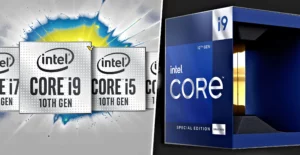Introduction:
In recent reports from South Korean media, alarming concerns have been raised regarding potential overheating issues associated with the iPhone 15 Pro, particularly attributed to its A17 Pro processor manufactured utilizing the state-of-the-art 3nm process technology by TSMC (Taiwan Semiconductor Manufacturing Company).
Allegedly, after running a high-end game, a Chinese user reported a significant surge in the iPhone 15 Pro’s body temperature, reaching a scorching 48 degrees Celsius within just 30 minutes.
This article aims to explore the implications of TSMC’s 3nm process technology and the potential causes behind the reported overheating.
The A17 Pro Processor and TSMC’s 3nm Process Technology: A Technological Marvel
The A17 Pro processor, designed by Apple and manufactured by TSMC using its 3nm process technology, is a technological marvel. It is the first 3nm chip to be used in a smartphone, and it represents a significant leap forward in performance and efficiency over previous generations of chips.
Transistor density
The A17 Pro has a transistor density of 19 billion transistors per square millimeter. The A17 Pro boasts a substantial increase in transistor density over the A16 Bionic. The heightened density allows Apple to enhance power and features without enlarging the chip.
Performance
Apple claims that the A17 Pro’s CPU is up to 10% faster than the A16 Bionic’s CPU. This is a modest improvement, but it is still impressive given the fact that the A16 Bionic was already one of the fastest mobile processors on the market.
The A17 Pro’s GPU is even more impressive. Apple claims that it is up to 20% faster than the A16 Bionic’s GPU. This is a significant improvement, and it will make the A17 Pro the most powerful mobile GPU on the market.
Efficiency
The A17 Pro is also more efficient than the A16 Bionic. Apple claims that it can deliver the same performance while consuming up to 15% less power. This means that users will be able to get more battery life out of their devices without sacrificing performance.
Overall, the A17 Pro processor is a technological marvel. It represents a significant leap forward in performance and efficiency over previous generations of chips. It is the first 3nm chip to be used in a smartphone, and it is sure to set a new standard for mobile performance.
Implications of the A17 Pro and TSMC’s 3nm process technology
The A17 Pro and TSMC’s 3nm process technology have a number of implications for the semiconductor industry and for consumers.
For the semiconductor industry, the A17 Pro demonstrates that TSMC is able to manufacture chips at the most advanced process node in the world. This gives TSMC a competitive advantage over other chipmakers, and it is likely to lead to more companies using TSMC to manufacture their chips.
For consumers, the A17 Pro means that they will have access to faster and more efficient smartphones. This will allow them to do more with their devices, such as playing more demanding games and running more complex applications. The A17 Pro will also help to extend the battery life of smartphones.
Overheating Concerns: Delving into the 3nm Process
The reported overheating issue with the iPhone 15 Pro raises pertinent questions about the efficacy and limitations of the 3nm process technology employed by TSMC. Industry experts speculate that venturing beyond the 3nm threshold could pose notable challenges in power control and mitigating current leakage, primarily due to the inherent limitations of the traditional FinFET process, which has been a foundational element in chip design up to the 4nm node.
The occurrence of chip overheating typically signals a potential flaw in the design or manufacturing process, often pertaining to difficulties in effectively managing power leakage.
Some individuals within the industry have expressed cautious concerns regarding potential issues with TSMC’s manufacturing process. One key factor is the maturation of the traditional “FinFET” manufacturing technique, which has been a fundamental technology in chip design since its introduction in 2011.
A significant worry is that if the initial set of 3nm products has defects, subsequent processes using the same technology might encounter similar issues. TSMC has revealed plans to introduce various 3nm follow-up processes, notably the second-generation N3E, which will build upon the foundations of the first-generation N3B.
The FinFET process, characterized by a three-sided power control interface, has been a vital component of chip design up to the 4-nanometer node. However, as the technology advances to below 3 nanometers, maintaining precise current control using FinFET technology is anticipated to pose significant challenges.
Recognizing FinFET’s limitations, TSMC is shifting to the “gate-all-around” (GAA) process for their 2nm tech. GAA brings better control, less power usage, and enhanced performance. This is crucial for tackling overheating problems and optimizing chip performance.
Follow us on Linkedin for everything around Semiconductors & AI
Comparative Analysis: Samsung’s Experience with Process Challenges
Samsung faced overheating issues with their 5nm process, causing clients like Qualcomm to switch to TSMC. Samsung is countering this by embracing the GAA process, aiming for better control, lower power usage, and reduced overheating concerns.
Read More: Samsung’s 3 nm Secret: GAA Transistors
Conclusion:
The iPhone 15 Pro’s rumored overheating issues highlight the balance between tech progress and device performance. Moving to TSMC’s 3nm tech is a big step forward, but it has challenges. Innovations like the GAA process offer potential solutions, improving user experiences and reshaping chip design and electronics. We’ll watch these advances closely in the tech world.
Reference:
[1] Tech News








